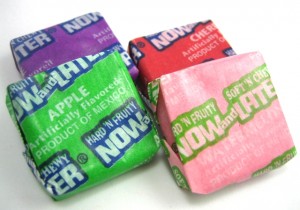 What we do NOW impacts how our students will perform LATER.
What we do NOW impacts how our students will perform LATER.
I’ll start this with a personal example – with a 4th grade personal narrative style intro…
Have you ever attended a Catholic service? I have. If you’re Catholic, you know when to stand, when to kneel, what to say…and when to stop! I am not Catholic, but I have attended services for special occasions. I am the last one to stand, the first one to sit, I miss kneeling all together. Then, it comes time to recite the Lord’s Prayer and I think “ah, I’ve got this!” So, feeling like I’ve finally found something I can be successful at, I speak up and chime in with everyone else – only to find out that I don’t know when to stop. Everyone else stops and I’m lingering on with “…For thine is the…” Oops! Eventually, I just give up. I just sit down and wait for it to be over. I shut down because I didn’t know what to expect, and when I tried, it didn’t work out so well.
Don’t you think our kids feel this way when they don’t know what to expect in our classrooms? Having well established routines and procedures is critical for our students to be successful.
Here’s some homework. Go home tonight and watch a kids channel for a little while – Nickelodeon, Cartoon Network, Disney Channel, PBS Kids… Notice how often things change. We can take a few clues from the millions of dollars that have been spent developing children’s programming for TV. We can apply the same principles to programming our classroom. We can’t leave students sitting for an extended period of time without having a plan for engaging them. Just think of the consequences the TV channels would have if they did this – kids would change the channel, and they would lose money because their advertisers would pull out.
Have you ever heard this? “The mind can only handle what the seat can endure.”
We can apply this too. At the least, our students need to have regular state changes. We can’t expect them to sit for an extended period of time. THIS IS IMPORTANT – A state change does not have to be a transition. It all depends on your purpose. If you have kids get up just for the sake of moving, it’s a transition. But, there is hope! Remember the Kagan structures? Throw in a Four Corners, Hand up-Stand up-Pair up, Touch down-Take off…Sound familiar? Try these Kagan Posters (courtesy of Mykel Salazar, Computer Specialist at Everett). Make sure that you teach expectations for these kinds of activities so that students will know exactly what to do – otherwise it will increase your transition time!
Challenge: This week, time your classroom activities. Keep track of the amount of time you are asking students to stay in one place, focused on one task. Compare these notes with the rest of your team. Make some decisions about how you can Program your day for success!
Anything we do NOW to prepare our students will definitely pay off LATER when we are stressed that the end of the year is coming quickly and we want our students to be ready for the next grade, or for the state accountability test that is just around the corner!
